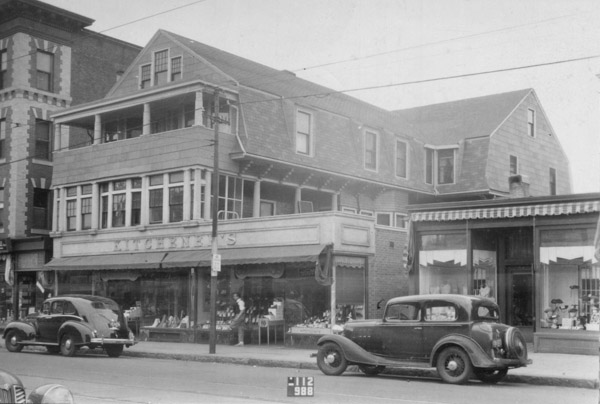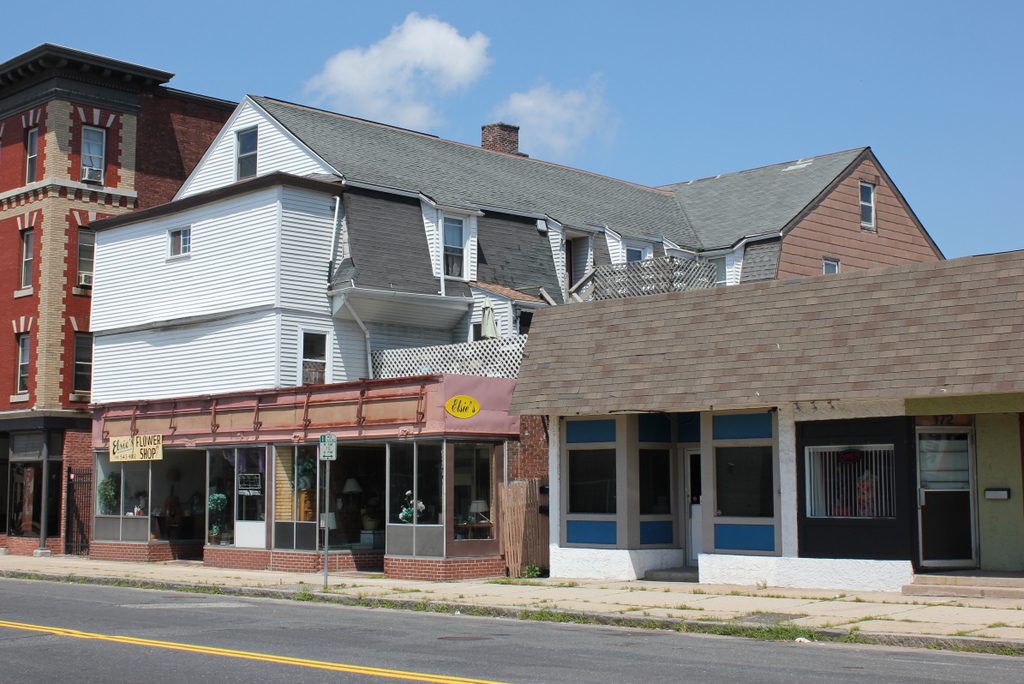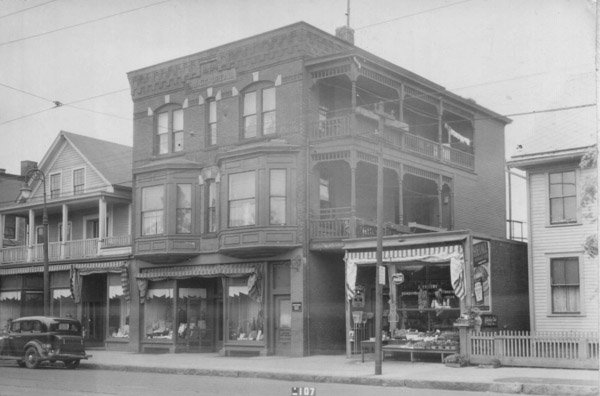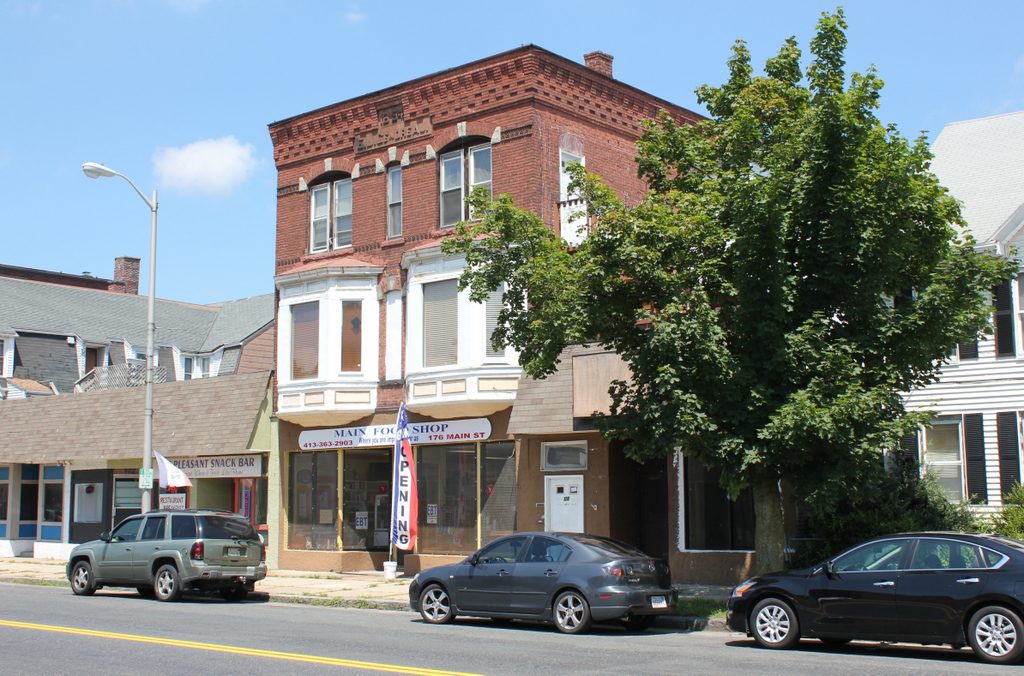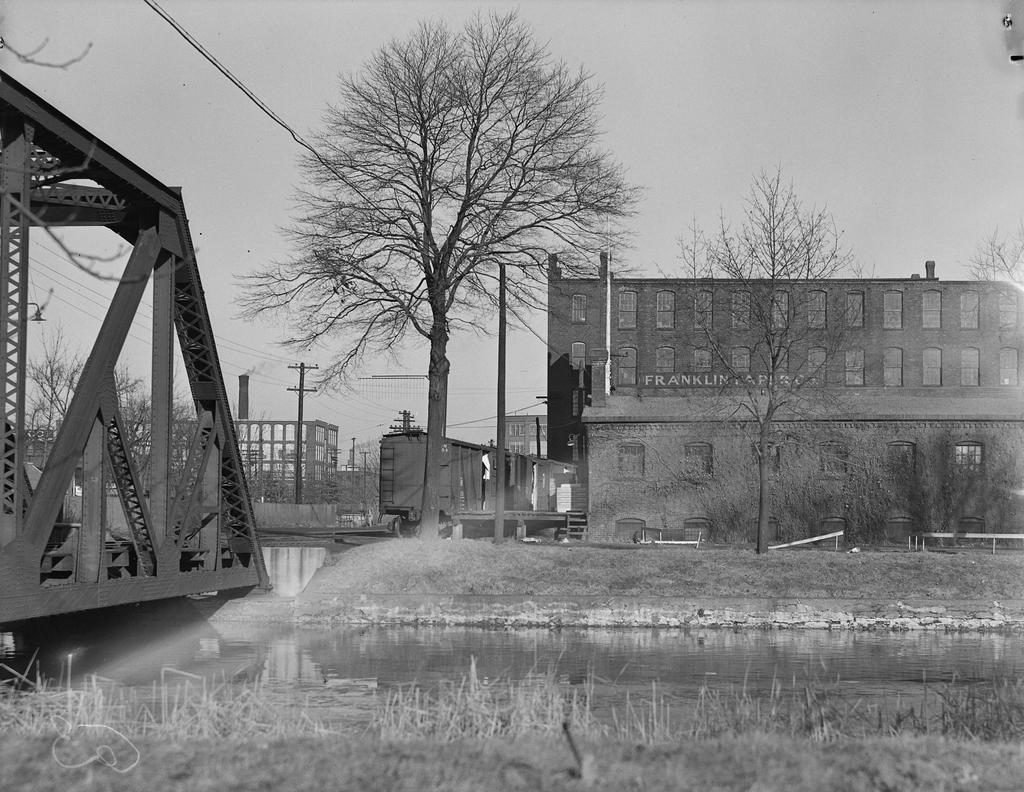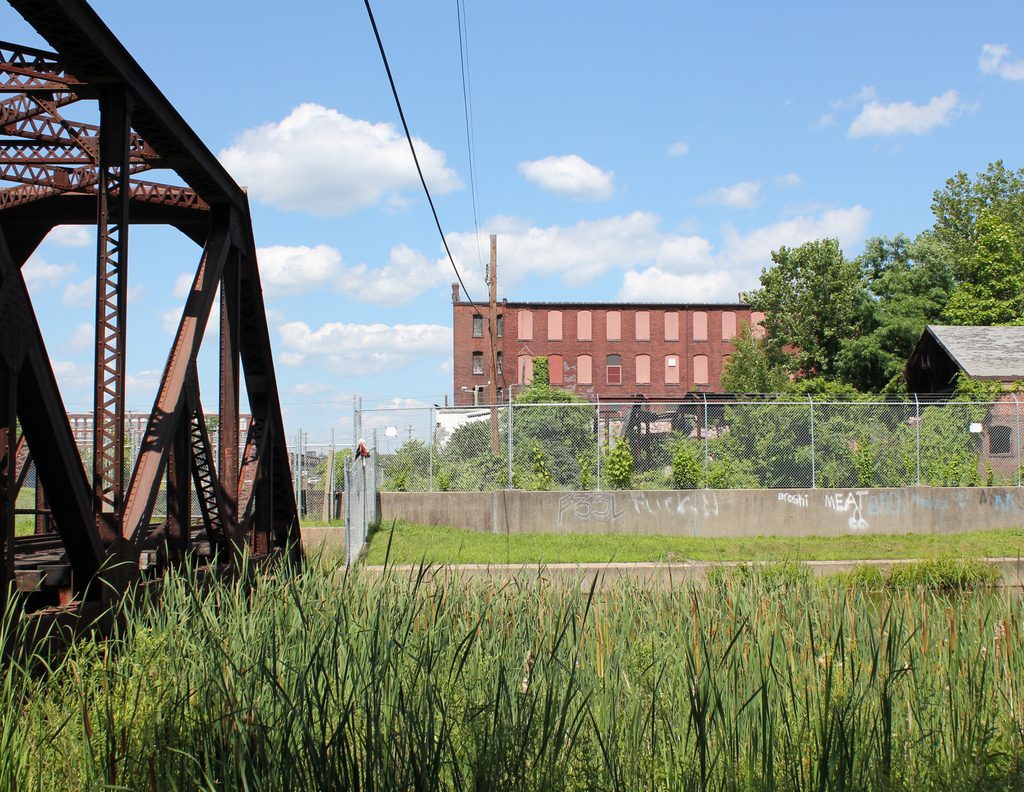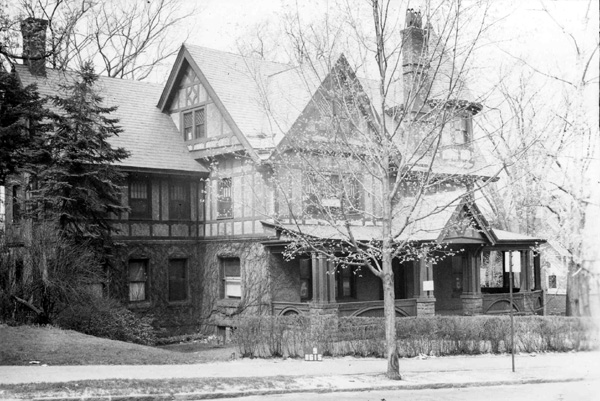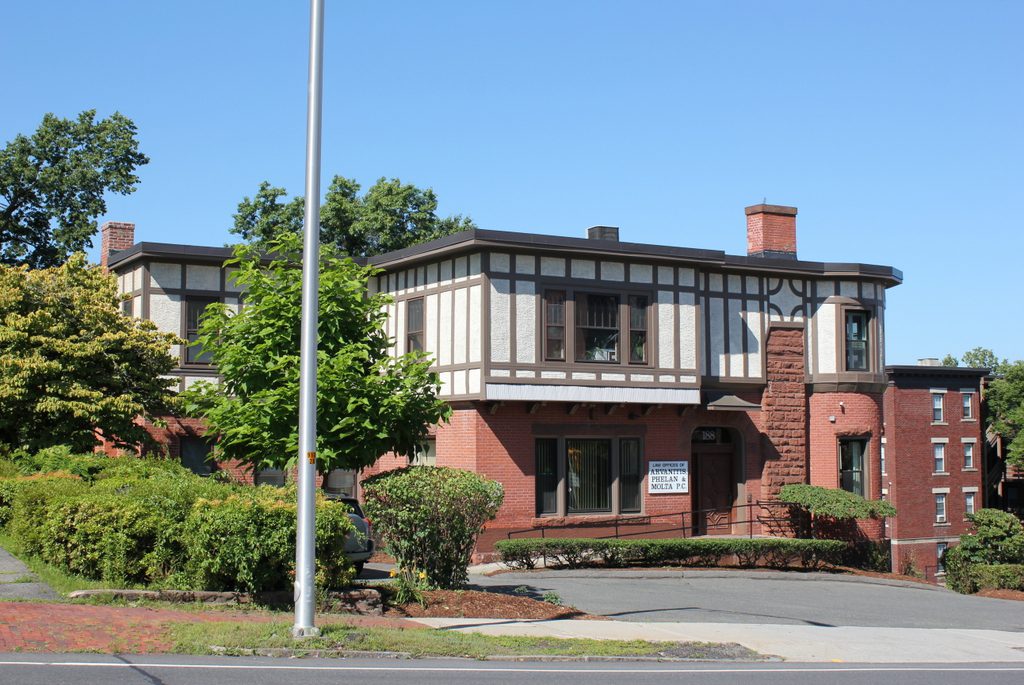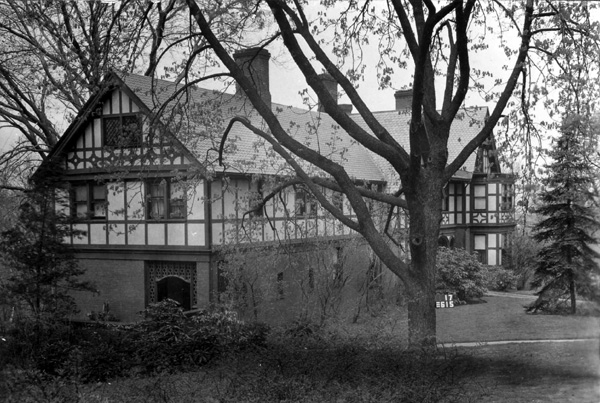The building at 166 Main Street in the Indian Orchard neighborhood of Springfield, around 1938-1939. Image courtesy of the Springfield Preservation Trust.
The building in 2017:
The state MACRIS database estimates that this building was built around 1865, although its original appearance has been significantly altered over the years. It is one of the older commercial buildings here on Main Street in Indian Orchard, dating back to when the neighborhood was being developed as a factory village. During this time, many immigrants moved to Indian Orchard, drawn to jobs at mills such as the nearby Indian Orchard Manufacturing Company, and Main Street became a small downtown area lined with stores and other commercial buildings.
Many of the immigrants who came to Indian Orchard were French-Canadian, including Octave A. LaRiviere, who came to the United States as a teenager in the 1850s. In order to avoid anti-immigrant discrimination, he adopted the anglicized name John Rivers, and by 1870 he and business partner Alfred Dessotelle were running the Rivers & Dessotelle variety store here on the ground floor of this building. LaRiviere later became the sole owner of the business, and by 1880 the city directory listed him as selling “Dry Goods, Fancy Goods, Boots and Shoes, Hats and Caps, Window Shades, etc., Gents’ Furnishing Goods.”
LaRiviere – who reverted to his French name by around the turn of the 20th century – lived here above his store, along with his wife Edesse and their two daughters, Eugenia and Josephine. Aside from his dry goods business, he was also active in politics, representing Ward 8 on the city council in 1883, 1884, and 1896, and on the board of aldermen in 1887 and 1888. Then, in 1912, he served as one of the state’s eight at-large delegates to the Republican National Convention, a hotly-contested party convention that pitted conservative incumbent president William Howard Taft against progressive former president Theodore Roosevelt. LaRiviere was a pro-Roosevelt delegate, but Taft ultimately won the party nomination. However, Roosevelt ran a third-party campaign in the fall, and LaRiviere did the same, breaking ranks with the Republicans and running for state auditor as a member of the Progressive Party. LaRiviere finished a distant third in the statewide race, though, behind the Republican and Democratic candidates.
At some point, apparently around 1909, a third floor was added to the building, with a large cross-gambrel roof and dormer windows. LaRiviere continued to live here until his death in 1915, and by the time the first photo was taken in the late 1930s, the ground floor was occupied by Kitchener’s Department Store. The store would remain a fixture in Indian Orchard for many years, and was still in business here in this building into at least the 1989s, more than a century after the Rivers & Dessotelle variety store first opened in the storefront. However, the rise of suburban malls and shopping centers eventually took its toll on Kitchener’s and other downtown retailers, and the store subsequently closed.
Today, the building is still recognizable from the first photo, although it has undergone some changes. At some point around the mid-20th century, the exterior was covered in asbestos shingles. Although it is hard to tell for sure, these may have been on the building at the time of the first photo, but they have since been replaced by modern siding, except for the section on the far right. On the front of the building, the storefronts have not significantly changed over the years, but the front porches on the second and third floors have since been completely enclosed, with only two windows on the second floor and a small one on the third floor. Otherwise, the only other noticeable change from this angle is a patio area, which is located above the storefront on the right side of the building.

